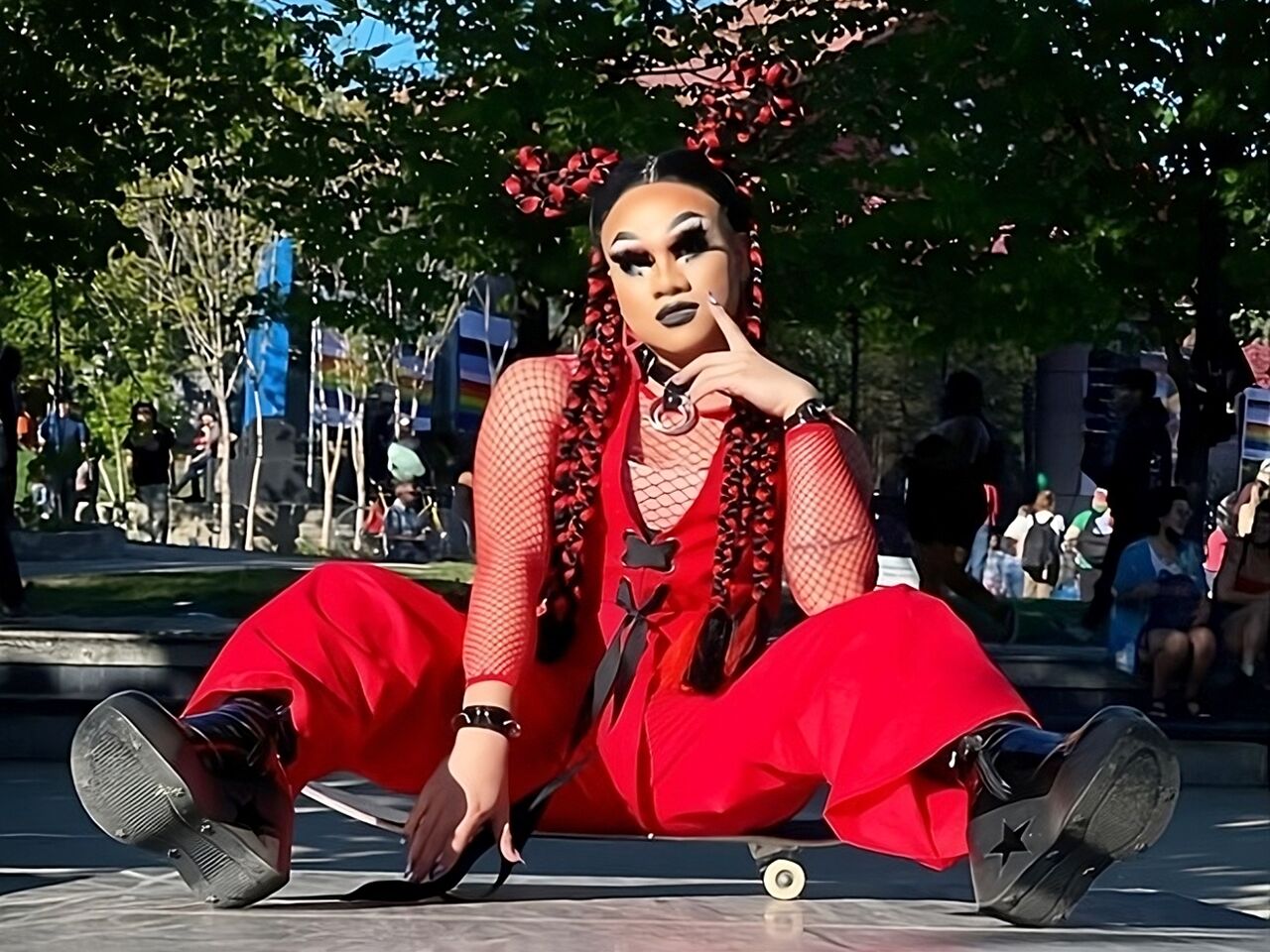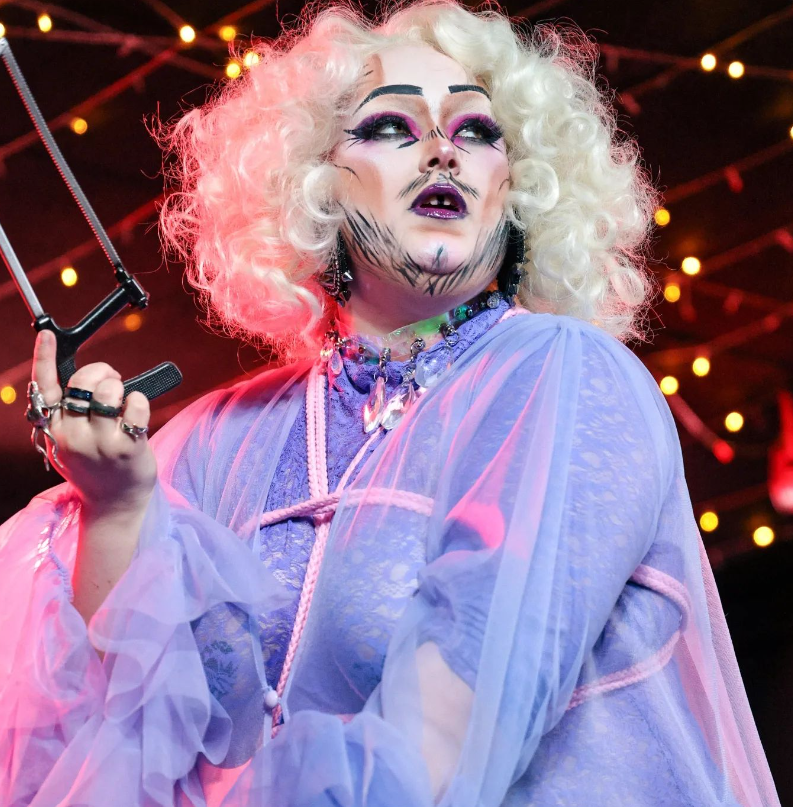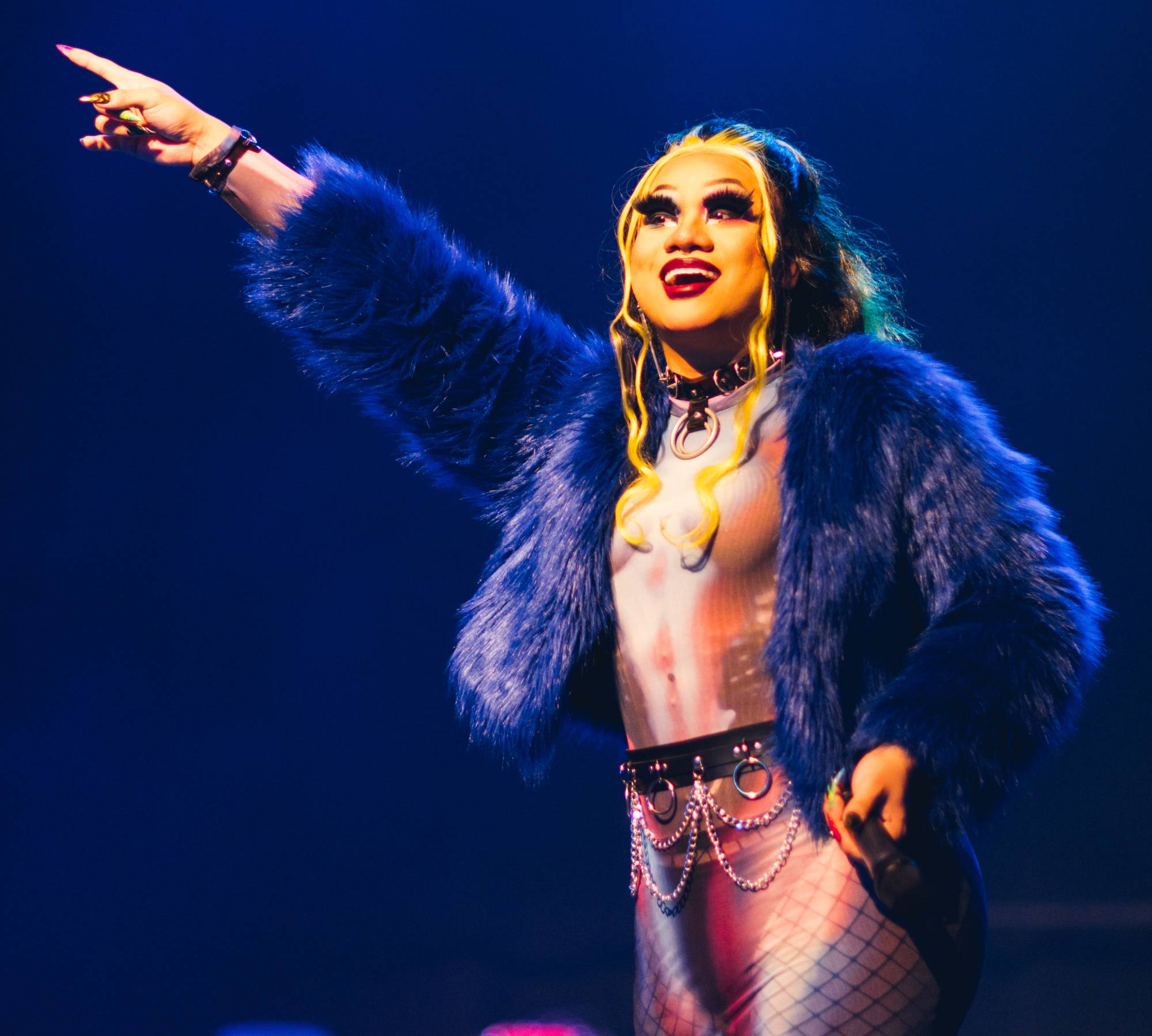New Drag Artist in Residence program designed to combat hate
Why It Matters
Vitriolic verbal attacks on drag queens and trans people escalated in 2023, with demonstrations in several Canadian communities. The Centre hopes that showcasing drag as an art form will help make the performances more accessible.

Ruby Chopstix admits she’s a little afraid of becoming a target.
“I’ve always been worried about being a target of hate and all this bigotry that is happening right now,” said the Winnipeg drag queen. “I don’t think there’s ever been a time in drag specifically that I’ve never been scared.
“It’s not the most easy thing to do, but I know that it will help inspire a lot of queer people, queer youth.”
Ruby is one of the three finalists for a new program launching out of the Rainbow Resource Centre (RRC) in Manitoba’s capital.
The centre is hiring a Drag Artist in Residence, a title and program more commonly seen in art galleries, libraries and museums.
As far as they know, the LGBTQ+ community support centre says it’s the first of its kind in Canada.
“In our opinion, drag is one of the great art forms that exists out there,” said Evan Maydaniuk, director of development for RRC.
“As we talk about drag alongside other art forms, it uplifts the entire drag community.”
LGBTQ+ backlash seeps across the border
Over the past couple of years, misinformation, hate, and vitriol have surged against drag queens and the trans community in Canada, fuelled by the political divide in the U.S. bubbling across the border.
In Headingley, a small community just west of Winnipeg, protesters attended a drag queen storytime event for children at the local library in August. There, two small groups of supporters and protesters glared and yelled at each other across the street, and eventually, two women shoved each other. No one was hurt.
Later in October, a coffee shop in Winnipeg received what they called a “barrage” of hateful messages on social media and promises of protests when they announced a similar event.
When they went ahead with the event, about 200 LGBTQ+ allies showed up to counter the 40 or so protesters.
In May 2023, a Brandon, Man. school trustee tried to put together a committee to review books in the school libraries to remove any that dealt with sexuality and gender identity.
The Brandon school division ultimately denied the request and reprimanded several members for breaching their code of conduct.
The same sorts of scenarios played out in communities across Canada and came to a head in the fall as anti-LGBTQ+ protesters marched in numerous cities.
From there, the term “parental rights” was coined as protesters demanded administrators tell them if their children had started using a different pronoun at school and became part of the Manitoba PC’s re-election platform in October. The NDP defeated them.
Parental rights is a phrase that Maydaniuk called “a scapegoat term to try and come after trans and queer youth.”
“It was a difficult year for the community, the level of hate. I have not seen that in such a public way before here.”
RRC was on the front lines of counter-protests while trying to balance supporting their community members in the face of increasing hatred.
His idea for a Drag Artist in Residence program came from there, said Maydaniuk.
Cultural forefront
“Drag has been at the forefront of our culture for so long,” he said.
“Now that there is a bit of a backlash happening, it’s our way of saying ‘No, we stand by our artists, and we want to uplift them’ and … tell their stories with an equally queer and trans lens, which is drag.”
Drag “gives us the power to tell our stories how we want them to be told, from our own voices,” Mayaniuk added.
The idea should be celebrated, said Fae Johnstone, a longtime LGBTQ+ advocate and current director of Wisdome2Action in Ottawa.
“I absolutely adore this,” she said.
“Drag is an integral part of queer culture. It is an incredible and diverse art form that helps folks understand differences and laugh a little about it.
“I think this is a program that others should take up and bring into their own cities and communities.”
At its core, drag is performance art, said Johnstone,
“It is folks radically breaking from the chains of gender norms and assumptions, and it helps everyone see new possibilities and unlearn some of the horrific, misogynistic, homophobic and transphobic messages that we learn growing up.”
Finding an artist
To hire its inaugural Drag Artist in Residence, RRC opened up applications to the community and received about 10 replies, said Mayaniuk.
A committee read through the applications and narrowed them down to three, a process he called difficult.
“We had five or so within about three points of each other, and (it came) down to some really tough conversations between the judges to pick these final three,” said Mayaniuk.
The three finalists were invited to an interview with the panel of judges, who made a final decision, but that decision has yet to be shared with the three queens, including Ruby Chopstix, Dirt and Deb from Winnipeg.
Instead, the trio will be part of an event on Jan. 25 at the Plug-In Institute of Contemporary Art in Winnipeg.
They will be part of a fireside chat session there, and then each artist will perform a selection.
Afterwards, the winner will be announced. Tickets have sold out.
As part of their role, they will receive a quarterly payment to help them continue with their art, said Mayaniuk, and they will work with other RRC staff on programs to help teach and educate people about drag and queer culture.
Mayaniuk said it’s hopeful this will become a permanent program, with a new artist chosen annually.

Meet the Queens
For the past two years, Deb From Winnipeg has showcased her blend of possibilities on the gender identity spectrum.
Deb calls herself “a character that embraces the pretty and dump aspects of life, without the need for exhaustive analysis.”
“My fascination with drag dates back to my high school days, around the time when RuPaul’s Drag Race first aired. Although the show was different then and not without its issues, it served as a significant entry point into the world of drag for many, including myself.
“However, being a trans man, I initially perceived drag as something that wasn’t for me,” she said.
It wasn’t until the pandemic and with support from their partner and other queens that Deb From Winnipeg decided to make her debut.
RELATED: We must all speak out to stop anti-LGBTQ legislation
“On a political level, drag has always held immense importance, historically serving as a catalyst for queer rights. Trans women of colour, especially, have played a pivotal role, using drag as a form of loud activism to assert their right to exist, express themselves, and enjoy life without being perceived as a threat.”

Dirt said they grew up in what they called a “weird, creative” family, and their stage name was given to them by a friend at theatre camp.
“We always were in every drama or musical or whatever club or group at school,” said Dirt.
“To me, drag was like a natural progression of performance.”
For the showcase, Dirt, who said their drag tends to lean towards energetic and “silly” performances, will instead try to do something more reflective.
If they’re ultimately chosen, Dirt said they know that could open themselves to harassment.
“I’m not really, frankly, worried about it,” they said. “I’m already kind of someone who does a lot of very strange and kind of out there and … provocative stuff.”

Ruby Chopstix was inspired as a child by some of the biggest names in pop music, she said.
“I always admired and loved pop stars growing up, like Britney Spears and Janet Jackson and Beyoncé, Lady Gaga. I was just in awe at watching them perform.”
However, nerves meant that Ruby never took to the stage as a teen, and it wasn’t until she was helping on a film project that a local drag queen told her she “had a face for drag.”
“Nobody’s ever said that,” said Ruby. “I thought maybe I should actually start doing it.
“I pushed myself to actually figure out what I should do.”
A class at Prairie Theatre Exchange later, and Ruby Chopstix made her debut.
At the time of the interview, Ruby wasn’t fully set on what her performance would feature but said it would be emotional, no matter what.
“Either you’re going to cry at my performance or laugh your head off, and then leave being like, ‘Wow, Ruby really is that it girl,’” she laughed.

